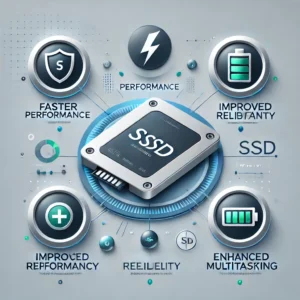Grabify IP Logger is a powerful tool for tracking IP addresses and gathering detailed analytics from various online platforms, including social media sites like Instagram. This article provides a comprehensive guide on how to effectively use Grabify IP Logger to track IP addresses, analyze the data collected, and ensure ethical use of the tool. We’ll cover the basics of setting up Grabify, customizing tracking links, interpreting the data, and troubleshooting common issues.
Key Takeaways
- Grabify IP Logger is a user-friendly tool that can track IP addresses and provide detailed analytics, including geographic location, device information, and more.
- Setting up IP tracking involves creating a tracking URL with Grabify, customizing the link, and sharing it on platforms like Instagram to capture the data when clicked.
- The data collected by Grabify can be analyzed to interpret geographic, device, and additional details, with advanced features available for in-depth analysis.
- When using Grabify IP Logger, it is crucial to adhere to ethical standards, maintain privacy and security, and communicate effectively when sharing tracking links.
- Common issues with Grabify, such as problems with link shortening and inaccuracies in data collection, can be resolved by following troubleshooting steps or seeking technical support.
Understanding Grabify IP Logger

What is Grabify IP Logger?
Grabify IP Logger is an Expert IP Grabber Tool designed to monitor and track IP addresses effectively. It is a versatile service that captures the IP addresses and other related data of individuals who interact with a specific link. This tool is particularly useful for users who wish to gain insights into their audience or track the engagement on their digital content.
Grabify operates on a straightforward principle: create a tracking link, share it, and then analyze the data collected when someone clicks on it. The service is known for its user-friendly interface and the detailed statistical information it provides. Here’s a quick overview of the steps involved:
- Step 1: Open the Grabify website and enter the URL you want to track.
- Step 2: Customize the tracking link as per your requirements.
- Step 3: Share the link with your target audience and start collecting data.
Grabify’s simplicity in creating, sharing, and viewing tracked information makes it a popular choice for IP tracking needs.
Key Features and Analytics Offered
Grabify IP Logger is equipped with a range of features that make it a powerful tool for tracking and analyzing web traffic. The platform provides real-time analytics, allowing users to monitor the activity associated with their tracking links as it happens.
- URL Shortening: Convert long URLs into shorter, more manageable links that are easier to share.
- Location Tracking: Pinpoint the geographic location of visitors to your link.
- Device Information: Gather data on the type of device, operating system, and browser used by link visitors.
- Referrer Data: Understand where your traffic is coming from by tracking the source of the link clicks.
By leveraging these analytics, users can gain valuable insights into their audience and the effectiveness of their content or marketing strategies. It’s important to note that while these features are powerful, they should be used responsibly and ethically.
The Concept of Smart Logger
Grabify’s Smart Logger technology goes beyond basic IP logging, capturing a wealth of additional data points that provide a deeper understanding of the user’s interaction with your link. This advanced feature is a game-changer for those who need more than just an IP address.
Smart Logger can record various details about the user’s device and environment. For instance, it can log the battery life, whether the device is charging, the screen orientation, and even the type of connection being used. This information can be crucial for understanding the context in which your link is accessed.
The Smart Logger feature is continuously evolving, with new capabilities being added to enhance the data collection process.
Here’s a glimpse of what Smart Logger can capture:
- Date/Time
- Country, City
- Battery, Charging status
- Orientation, Connection Type
- Timezone, Language
- Incognito/Private Window
- Ad Blocker, Screen Size
- Local IP, Browser, Operating System
- Device, GPU, Bot Name
- User Agent, Referring URL, Host Name
- Internet Service Provider
Understanding these details can help tailor your strategies and communications more effectively, ensuring that you’re reaching your audience in the most impactful way.
Setting Up Grabify for IP Tracking

Creating a Tracking URL with Grabify
Creating a tracking URL with Grabify is a straightforward process. First, find a URL you wish to track; this could be any link that you want to share with your target audience. Once you have your desired URL, follow these steps:
- Paste the URL into the Grabify website and click on “Create URL”.
- Grabify will generate a tracking link. To maintain the link’s regular appearance, click on “View Other link Shorteners”.
- Choose a shortener to create a new shortened tracking link.
- Send this link to the person you want to track via chat or email.
- When someone opens the link, you’ll be able to view the logged IP address and other details on Grabify.
Remember, the key to effective IP tracking is to ensure that the link is enticing enough for the recipient to click on it. The more natural it appears in the context of your communication, the higher the chances of it being opened.
By following these steps, you can easily set up a tracking link that will provide you with valuable insights into your audience’s behavior and location.
Customizing Your Tracking Link
Once you’ve created a tracking URL with Grabify, you can further customize it to suit your needs. Customizing your link is crucial for making it less suspicious and more clickable. For instance, you can use a link shortener to make the URL more aesthetically pleasing and less daunting for the recipient.
Customization also includes the ability to select a domain that appears more natural in the context of your communication. This can significantly increase the likelihood of the link being opened.
Here are the steps to customize your tracking link:
- After creating your URL, click on ‘View Other link Shorteners’ to see more options.
- Choose a shortener that fits your preference and restores your link’s regular appearance.
- Copy the new shortened tracking link.
- Share this link with the person you want to track via chat, email, or any other method.
Remember, the effectiveness of your tracking link largely depends on how convincingly it blends into the conversation or content.
Sharing the Tracking Link on Instagram
Once you have created and customized your Grabify tracking link, the next step is to share it on Instagram. Ensure the link is relevant to your audience to increase the likelihood of it being clicked. Here’s a simple guide to sharing your tracking link:
- Find content that aligns with the interests of the person you want to track.
- Copy the content’s sharing link and paste it into Grabify to create a new tracking URL.
- Choose a link shortener to give your tracking link a regular appearance.
- Share the newly shortened link in an Instagram message or on your user page.
When the recipient clicks on the link, Grabify logs their IP address and other relevant data, which you can then access from the Grabify tracking page.
Remember, the key to successful tracking is subtlety and relevance. The link should fit naturally within the context of your Instagram activity to avoid raising suspicion.
Analyzing the Data Collected by Grabify

Interpreting Geographic and Device Information
Once you have collected data through Grabify, the next crucial step is to interpret the information accurately. Grabify provides a comprehensive set of data, including geographic location and device-specific details. This allows you to understand where and how the tracking link is being accessed.
For instance, the geographic data includes the country and city of the user, along with their IP address and timezone. Device information covers the operating system, browser, and even the type of connection used. Here’s a simplified breakdown of the data you might see:
| Data Type | Example |
|---|---|
| Country | United States |
| City | New York |
| IP Address | 192.168.1.1 |
| Timezone | UTC-5 |
| Operating System | Windows 10 |
| Browser | Chrome |
It’s important to remember that the location data is an approximation and may not always be precise. The IP address-based geolocation has its limitations, and the accuracy can vary.
By analyzing this data, you can gain insights into the audience’s behavior and preferences. This information can be particularly useful for tailoring your content or services to better suit the needs of your users.
Understanding Additional Logged Details
Once you’ve successfully set up your Grabify link and started collecting data, you’ll notice a variety of details that are logged beyond just the IP address. Understanding these additional details can provide a deeper insight into your audience. Grabify logs a comprehensive set of data points, including but not limited to:
- Date/Time of access
- Country and City
- Battery status and Charging state
- Screen and Device orientation
- Connection Type and Timezone
- Browser and Operating System
- Device type and GPU
Each of these elements can be crucial for different analytical purposes. For instance, knowing the timezone can help you understand the best time to engage with your audience, while the device type can indicate the preferred platforms for your content.
It’s important to remember that the accuracy of location data is not absolute. The pinpointed location is an approximation, as geolocation based on IP addresses has its limitations.
When reviewing the logged details, you may encounter situations where certain data points are not showing up. This could be due to a variety of reasons, such as the user being in incognito mode or using an ad blocker that prevents certain information from being captured.
Utilizing Advanced Features for In-Depth Analysis
Once you’ve become comfortable with the basic functionality of Grabify IP Logger, you can delve into the advanced features that offer a more granular view of the data. These features allow for a deeper analysis of the traffic that interacts with your tracking link. For instance, you can set up custom parameters to track specific campaigns or events, enabling you to see how different audiences engage with your content.
Advanced analytics also include the ability to filter and sort data based on various criteria such as device type, location, or time of visit. This can be particularly useful when trying to understand patterns or trends in the data collected. Here’s a simple breakdown of the filtering options available:
- Device Type
- Geographic Location
- Time of Visit
- Referring URL
By leveraging these advanced features, you can tailor your analysis to meet specific objectives, whether that’s optimizing marketing strategies or simply gaining a better understanding of your audience.
Remember, while these tools are powerful, they should be used responsibly and with respect to individuals’ privacy.
Best Practices for Using Grabify IP Logger
Ensuring Ethical Use of IP Tracking
When using Grabify IP Logger, it’s crucial to prioritize ethical considerations. Always obtain consent from individuals before tracking their IP addresses. This not only fosters trust but also ensures compliance with privacy laws and regulations. Unauthorized tracking can lead to legal repercussions and damage your reputation.
Ethical use of IP tracking tools like Grabify is not just a legal obligation but a cornerstone of respectful and responsible online behavior.
Here are some guidelines to ensure ethical use:
- Inform users that their IP address may be logged.
- Provide a clear purpose for the IP tracking.
- Offer an opt-out option for users who prefer not to be tracked.
- Ensure that the data collected is used for legitimate purposes only.
Remember, transparency is key. Users should be aware of what data is being collected and how it will be used. This approach not only aligns with ethical standards but also enhances the credibility of your operations.
Maintaining Privacy and Security
When utilizing tools like Grabify IP Logger, it’s crucial to prioritize privacy and security measures to protect both yourself and the individuals whose IP information you are tracking. Cybercriminals can exploit IP loggers in phishing scams, using location data to craft more convincing fraudulent communications. To mitigate such risks, consider the following steps:
- Always obtain explicit consent before tracking IP addresses. This not only respects user privacy but also ensures legal compliance.
- Use anonymizing services to mask your own IP address when conducting IP logging, safeguarding your location and network details.
- Stay informed about the legal implications of IP logging in your region to avoid potential legal issues.
It is essential to balance the power of IP logging with ethical practices and legal standards to maintain trust and integrity in your activities.
Tips for Effective Communication When Sharing Links
When sharing tracking links created with Grabify, clear communication is crucial to ensure the recipient understands the purpose of the link. Always inform the recipient that the link is being tracked, and provide a valid reason for its use. This not only fosters trust but also complies with ethical standards.
Transparency is key. Avoid deceptive practices such as hiding the tracking nature of the link behind shortened URLs without disclosure.
Here are some tips for effective communication:
- Be upfront about the tracking nature of the link.
- Explain the reason for tracking and how the data will be used.
- Offer assurance that the data collected will be kept confidential and used responsibly.
- If applicable, provide an option for the recipient to opt out of tracking.
Remember, the goal is to maintain a positive relationship with the recipient while using Grabify IP Logger responsibly.
Troubleshooting Common Issues with Grabify

Resolving Problems with Link Shortening
When using Grabify to shorten links, users may occasionally encounter issues where the shortened link does not function as expected. Resolving these issues promptly is crucial to maintain the effectiveness of your IP tracking efforts. Here are some steps to troubleshoot common link shortening problems:
- Ensure that the original URL is valid and accessible before shortening it with Grabify.
- If the shortened link is not working, try creating a new one and test it yourself before sharing.
- Check Grabify’s Terms of Service to confirm that your content complies with their guidelines, as certain types of content are prohibited from being shortened.
Remember, a non-functioning link can result from various factors, including server downtime or the presence of content that violates Grabify’s policies. It’s important to review the terms and ensure compliance to prevent link shortening issues.
If problems persist after taking these steps, consider using alternative link shorteners provided by Grabify or reaching out to their support for assistance.
Addressing Inaccuracies in Data Collection
When using Grabify IP Logger, you may encounter discrepancies in the data collected. The pinpointed location is an approximation, as the accuracy of IP address-based geolocation is inherently limited. If specific data points are not showing up, it’s often because the device or browser lacks support for these features. As technology progresses, compatibility is expected to improve.
It’s important to understand that no IP tracking tool can guarantee 100% accuracy due to the dynamic nature of internet protocols and user privacy measures.
To address common concerns, consider the following points:
- The absence of activity logs may simply mean the tracking link has not been accessed yet. Reloading the page can sometimes resolve this issue.
- Advanced features like “Smart Logger” capture detailed information, but may not be supported by all devices.
- Bots interacting with links can skew the data, as they do not represent genuine user engagement.
Understanding these limitations and how to work around them is crucial for effectively using Grabify IP Logger.
Getting Support for Technical Difficulties
When facing technical issues with Grabify IP Logger, it’s essential to know where to turn for assistance. The first step is to consult the Frequently Asked Questions (FAQ) section, which addresses common concerns and provides immediate solutions. If the FAQ does not resolve your issue, the next step is to reach out to customer support.
To streamline the support process, prepare the following information before contacting the team:
- The nature of the technical issue
- Any error messages encountered
- Steps you’ve taken to resolve the problem
Remember, detailed information helps the support team diagnose and resolve your issues more efficiently.
If the problem persists, consider checking online forums or community discussions, as other users might have encountered similar issues and can offer practical advice or solutions.
Conclusion
In summary, Grabify IP Logger emerges as a powerful and user-friendly tool for tracking IP addresses through social media platforms like Instagram. The process is straightforward: create a tracking URL using Grabify, share it with the target user, and then monitor the logged information once the link is clicked. This tool not only captures IP addresses but also provides a wealth of analytics, including geographic location, device type, operating system, and more. While the utility of Grabify is clear, users should employ this tool responsibly and ethically, respecting privacy and legal boundaries. Whether for security purposes or curiosity, Grabify offers a simple yet effective method for IP tracking and analysis.
Frequently Asked Questions
What is Grabify IP Logger?
Grabify IP Logger is a web-based tool that allows users to create tracking links to collect data on who clicks on the link, including their IP address, geographic location, device type, and more.
How do I create a tracking URL with Grabify?
To create a tracking URL with Grabify, simply go to the Grabify website, paste the URL you want to track into the input field, and click ‘Create URL’. Grabify will then provide you with a new tracking link.
Can I customize the tracking link provided by Grabify?
Yes, Grabify allows you to customize your tracking link by choosing different URL shorteners to restore the link’s regular appearance, making it less suspicious to the target user.
What kind of data can I collect with Grabify?
Grabify can log various data points such as date/time, IP address, country, city, device type, operating system, browser, screen size, local IP, and more.
How can I ensure ethical use of IP tracking with Grabify?
To ensure ethical use of IP tracking, always obtain consent from individuals before tracking their information, use the data responsibly, and adhere to privacy laws and regulations.
What should I do if I encounter issues with Grabify’s link shortening or data collection?
If you encounter issues with Grabify, you can try resolving common problems by checking the link for errors, ensuring accurate data collection settings, or reaching out to Grabify’s support for technical assistance.




